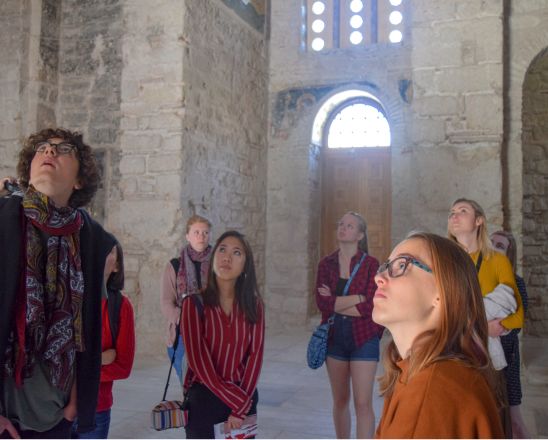
Byzantine Art and Architecture
Related Discipline: Art cross listed with ARTH 364
Byzantine Art and Architecture course aims to explore the Byzantine artistic production from its origins in the catacomb frescoes of second-century Rome and the Syro-Palaistine region, to the art produced during the last centuries of the empire. It aims to provide an introduction to the varied physical remains left behind by the Byzantines: architecture (urban as well as rural), painting (mural decoration, icon painting and manuscript illumination), luxury objects of the so-called minor arts, as well as objects destined for everyday, mainly secular, use. The study of the material will not be confined to the examination of the evolving ‘styles’ and ‘iconographies’ –the pictorial languages of these artefacts- but also hopes to survey: a) the role of the image in Byzantium as a complex product of specific historical, theological and broader political influences considering its use both in religious and secular contexts; b) matters of gender and patronage; c) the cross-cultural exchanges in the Mediterranean basin during the Byzantine era.
Part of the Byzantine Art and Architecture course will examine the various ways through which the Byzantine culture influenced the new humanism of early-Renaissance Europe, as well as modern perceptions of Byzantium.
Besides the lectures, guided visits to Byzantine monuments have been scheduled as part of this course. The monastery of Hossios Loukas, a functioning establishment to date with lavish mosaic decoration dating back to the 11th c., and the castle-state of Mistras in the Peloponnese with its numerous frescoed churches and chapels, have been included in the Peloponnese field trip itinerary. To gain a broader first-hand understanding of the agenda of the image in Byzantium, visits to a series of Byzantine monuments in Thessaloniki (Hagios Dimitrios, the Acheiropoietos and Hagia Sophia) have been planned as part of the Northern Greece field trip. Finally, the course aims to explore the Byzantine collections, museums and the surviving Byzantine churches of Athens.




